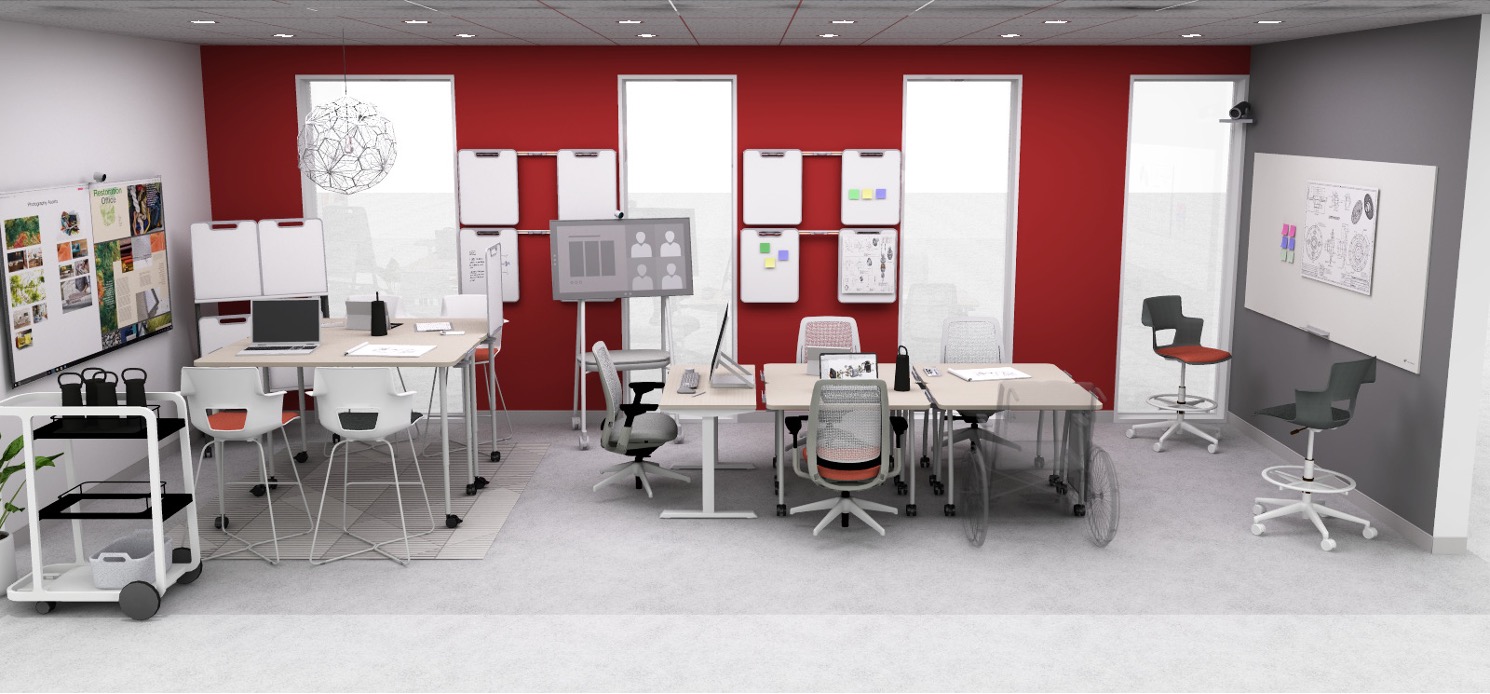Welcome and Objectives
Welcome to the College of Engineering Microsoft and Steelcase Immersive Lab spaces! You will be introduced to the Immersive Labs and how to take full advantage of these spaces to support your teaching and learning.
The Immersive Labs are new to the College of Engineering and we hope you enjoy using them. These rooms are designed to be flexible collaboration spaces capable of suiting a team's specific needs. As we walk through how to use the furniture provided by Steelcase and the Microsoft technology offered in these rooms, the most important takeaway for you is that you are in charge of how they should be used! We will show you the basics of the flexible spaces, but will also rely on your feedback to provide insight into how you like to use these rooms best (See the Tips and Tricks from Fellow Immersive Lab Users!).
Objective
After completing this introduction, you will be able to use the Immersive Lab spaces, including the Steelcase furniture, technology provided by Microsoft, and support resources offered through the College of Engineering.
To-Do
Explore each step of this page as we walk through how to use the Immersive Lab spaces, including reading and watching the included text and videos.
Feedback
Provide your feedback on using the Immersive Lab space here.
Step 1: Get Introduced to the Immersive Lab
The Immersive Labs are new to the College of Engineering and are a collaborative effort between Microsoft and Steelcase. Watch the short 1-minute video to see a brief overview of how this collaboration has been used by others and how they can be used in the Immersive Labs.
Step 2: Explore the Immersive Lab Design Possibilities
One of the most creative aspects of the Immersive Labs is how flexible the rooms are. These spaces support various learning and teaching activities and team collaborations. Watch the 2-minute video for some insights into the functionality of the furniture and technology in the Immersive labs.
Next, let's take a look at what's included in the Immersive labs. Below you can see two possibilities for how they can be set up based on your needs and group activities. We strongly encourage you to set up and re-design the Immersive Labs in whatever way works best for you! As you look at the schematics of these designs think about the types of activities you will use the Immersive Labs for, including working on group design projects, practicing for presentations, and brainstorming ideas. Think about how you might use the flexible furniture and technology in these spaces to collaborate with your teammates. Next, read through the descriptions of each design to familiarize yourself with all the room offers.


Step 3: Review the Immersive Lab User Guidelines
This page includes some guidance on using the Immersive Labs. Please read through these guidelines carefully, and reach out to the College of Engineering support resources if you have questions.
- All equipment, technology, and furniture must remain in the room at all times (including Surface Hub styluses, portable whiteboards, etc.)
- The Immersive Labs are open 24hrs a day, but are reserved during certain blocks of time. You can view the reservation calendar and make a reservation by filling out an online reservation form, or you can access the link through the Check Immersive Lab Availability. Note, if there is no one in the room you are free to use them on a first-come first-served basis
- While you are free to redesign/setup the space in a way that best suites you and your groups needs please keep the room neat and tidy and refrain from eating or drinking in the Immersive Lab spaces
- For IT assistance, please contact: Christopher Steffen chris.steffen@unl.edu
- For guidance on how the Microsoft technology can be used to support your team's collaboration, please contact: Yaoling Wang yaoling.wang@unl.edu or Nathan Pindell npindell2@unl.edu
- For all other questions, please contact: Amie Sommers, asommers2@unl.edu